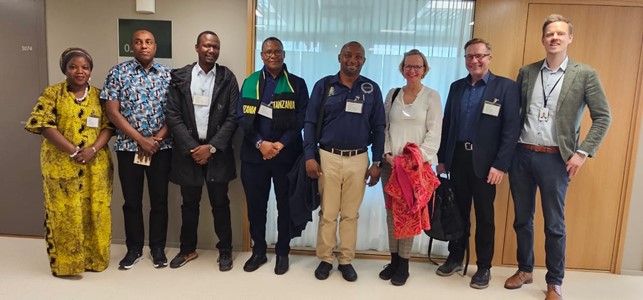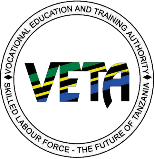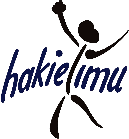Reporting the results of one of our projects in Tanzania raised some thoughts on the arc of any development project. First, you feel an immense excitement, it is the honeymoon period of the project, everything seems to be possible, new partners are interesting, the expected results seem achievable, and it seems that there is ample time for the activities, and so on. Everything seems bold and beautiful. The energy from the kick-off meeting carries you for a long time. But when the honeymoon is over, you face the due dates which come too soon, the cooperation with the partners falters, “unexpectedly” it turns out that the funds are limited, and you begin to lose your north star. In our project, the obligatory interim reporting helped us to get back on track.
The TVET@Work project (Boosting Tanzanian VET-Industry Collaboration to Foster Employability and Entrepreneurship through Teachers’ Competence Development and Use of Immersive Technologies) is co-funded by the European Union’s Erasmus+ Capacity Building in the field of Vocational Education and Training (VET) programme (European Commission, 2024), for three years during 2023–2026. The project aims to enhance the capacity of providers and teachers of vocational education and training in order to strengthen the cooperation between public and private sectors as they make demand-oriented and opportunity-driven VET interventions. It also seeks to improve the capacity of Tanzanian vocational education and training to respond to economic and social developments. The more specific objectives of the project have been aligned with regional and national development strategies, and the project supports these objectives by focusing on VET teacher training. As a result, the project strives to equip VET teacher trainers and trainees with skills to train their students in entrepreneurship via digital solutions, with capabilities in digital pedagogy and with skills on cooperating with the industry, also in terms of inclusion in industrial attachments and civic engagement. By training the VET professionals, we wish to ensure the sustainability of the project results, as that knowledge will remain at the training centre. The project uses participatory methods as a central approach, from initial planning stages all the way to organizing and evaluating the activities. The co-creative approach of project is present also in the workshops and meetings where we jointly plan, develop and assess all of our tools, guidelines, training programmes, and digital solutions. In the interim report, we can state that TVET@Work is on its way to having positive and long-lasting effects on the students, on VET teachers, and participating organizations.
Despite all the challenges the project has faced, it was amazing to compile the results so far for the interim report. It is only when you need to explain it to someone else that you can see what you have already achieved, and the obligation to report on it makes the achievements visible. The project results so far, at the interim phase, count as follows: we conducted a needs assessment among VET teachers, designed an ad hoc training on entrepreneurship based on the Tanzanian labour market and the VET professionals’ needs. We also interviewed VET teachers and entrepreneurs, and together with them created and implemented a blended training course which combined face-to-face and online training with an innovative digital approach. In addition to this, we organized two sets of one-week pilot training sessions – one on entrepreneurship training using a new digital solution and the second on digital solutions and digital pedagogy. The feedback was positive, and the participants reported that these activities had a positive impact on, and added value to, their competencies. Furthermore, we created a status analysis report on the project (Centro San Viator & 3DBear, 2024), an academic article written by Dr. Piia Kolho (2025), and ten online training modules. In terms of the managerial side, we also compiled a project handbook and conducted a review of the quality assurance, risks, mitigation, and monitoring for the project milestones and deliverables.
The project also included a midterm seminar and benchmarking visit to Finland which took place in May 2025. This strengthened the European dimension of the project and provided a possibility to learn from Finnish and European practices for benchmarking purposes. The project team visited, among others, entrepreneurship organizations, private companies, VET schools, a special vocational education college, and the Finnish National Agency for Education. During this visit, we began writing the interim report together and also had a warm and joyful get-together dinner. All participants felt that the visit was successful, and it gave a lot of food for thought.
Among the most important takeaways, the visitors counted the opportunity to learn more about the recognition of prior learning in competency-based vocational education, about individual pathways, and about personal competence development plans. Other important realizations they pointed out were the level of inclusion and the way how students with special needs are supported in Finnish vocational education. They were astonished to see how the students with a need for special support were guided through the training day. They also admired the independence and responsibility of the students that was required in the vocational schools. One of the visitors even mused: “Do students really have to clean up after themselves and put away their tools in the workshops after the training day?”
Now that I am putting all of these learned things on a page, I notice that it washes away the frustration of planning the visitors’ schedules, having all the appointments agreed on and worrying over whether the travellers will get their visas on time. Thinking through the past process, what I learned from this, as a project manager with two decades of experience, is that even though this meeting could have been done online, I am now much more convinced there are things that digital solutions simply cannot replace. This includes the immediate sense of togetherness created by meeting in person, the opportunity to see things with your own eyes in the places you visit, and the chance to experience them for yourself. All of these things create deep-rooted experiential knowledge that is part of strengthening the capacity of all of us. This joint, in-person elaboration of the interim report electrified our efforts. It helped us to understand each other’s strengths and contributions, and it encouraged us to look at each other with a more respectful and compassionate eye.
After the honeymoon, frustration, and back-on-track phases, we still have some 12 months ahead of us for our joint endeavours. The project arc is not complete yet. The final report will present the results in all their glory, and we shall again learn that instead of mere boring reporting, making things visible is a rewarding exercise.
Lähdeluettelo
- Centro San Viator & 3DBear. (2024). Challenge-Based Learning for Entrepreneurship, Analysis of Needs and the Real Situation of the Business Market and Entrepreneurship in Tanzania. https://www.hamk.fi/wp-content/uploads/2025/03/Challenge-Based-Learning-for-Entrepreneurship_-Analysis-of-Needs-and-the-Real-Situation-of-the-Business-Market-and-Entrepreneurship-in-Tanzania.pdf
- European commission. (2024). Capacity building in the field of Vocational Education and Training (VET). Retrieved 29.10.2025 from https://erasmus-plus.ec.europa.eu/opportunities/organisations/cooperation-among-organisations-and-institutions/capacity-building-vet
- Kolho, P. (2025). Entrepreneurship education as a key to future success in Tanzania. HAMK Pilkku, 18.6.2025. https://doi.org/10.63777/fcec
Authors








